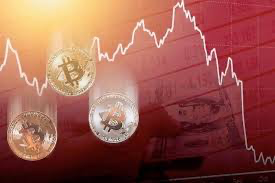
Bitcoin Edges Closer to Bear Market as Key Support Levels Break: Analysts Caution
Can short-term holders maintain their composure as Bitcoin struggles to gain upward momentum? After months of consolidation, Bitcoin has breached critical support levels, raising concerns among analysts about the potential start of a bear market.
On-chain experts are expressing worries about the elevated cost basis for recent Bitcoin investors, while technical analysts highlight Bitcoin’s current price lagging behind its 200-day Simple Moving Average (SMA).
Is the Bull Market Coming to an End?
The 200-day SMA, which tracks Bitcoin’s average price over the past 200 days, is often considered a crucial market trend indicator. After reaching record highs in March, Bitcoin’s price has mostly oscillated between $58,000 and $70,000, with a brief dip to $50,000 in August. This prolonged period of sideways movement has allowed the 200-day SMA to overtake the market price.
According to CryptoQuant author Adel Axel Jr., the break below this support level “formally indicates a bearish sentiment.” He also pointed out on Twitter that “leverage has increased on the top three exchanges in recent days,” with the next major support level at the 365-day SMA, around $50,000.
Despite these developments, Axel Jr. has not yet declared the start of a bear market. He described Bitcoin’s five-month consolidation since March as “healthy,” noting the absence of “major panic-driven sell-offs” as early investors have gradually taken profits. Axel Jr. also observed that realized losses now exceed gains, a typical sign of the end of a consolidation phase. Looking ahead, he suggested that a “double test” around the $50,000 level might be a “favorable scenario.”
Short-Term Holders in the Red
Glassnode lead analyst James Check pointed out that over 80% of short-term Bitcoin holders are now in the red, meaning their holdings are worth less than when purchased. Short-term holders, defined as those who acquired their coins within the past five months, are more likely to sell during periods of market instability.
“This situation resembles conditions seen in 2018, 2019, and mid-2021 when many investors were at risk of panic selling, potentially triggering a bearish trend,” Check wrote.
However, Check emphasized that the extent of these losses is still relatively modest, suggesting that recent investors may not yet be feeling the pressure to sell. “Although 80% of short-term holdings are underwater, the Unrealized Loss represents only 4% of the total market cap,” Check explained.






